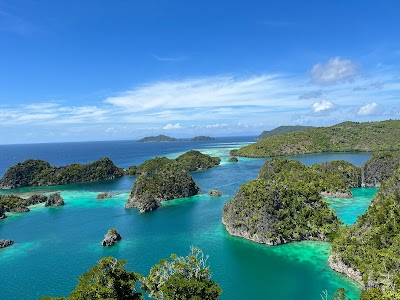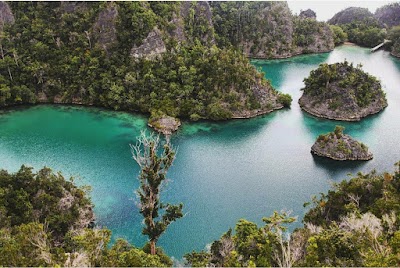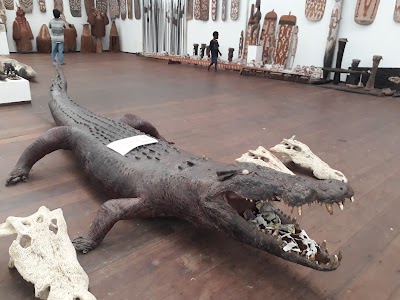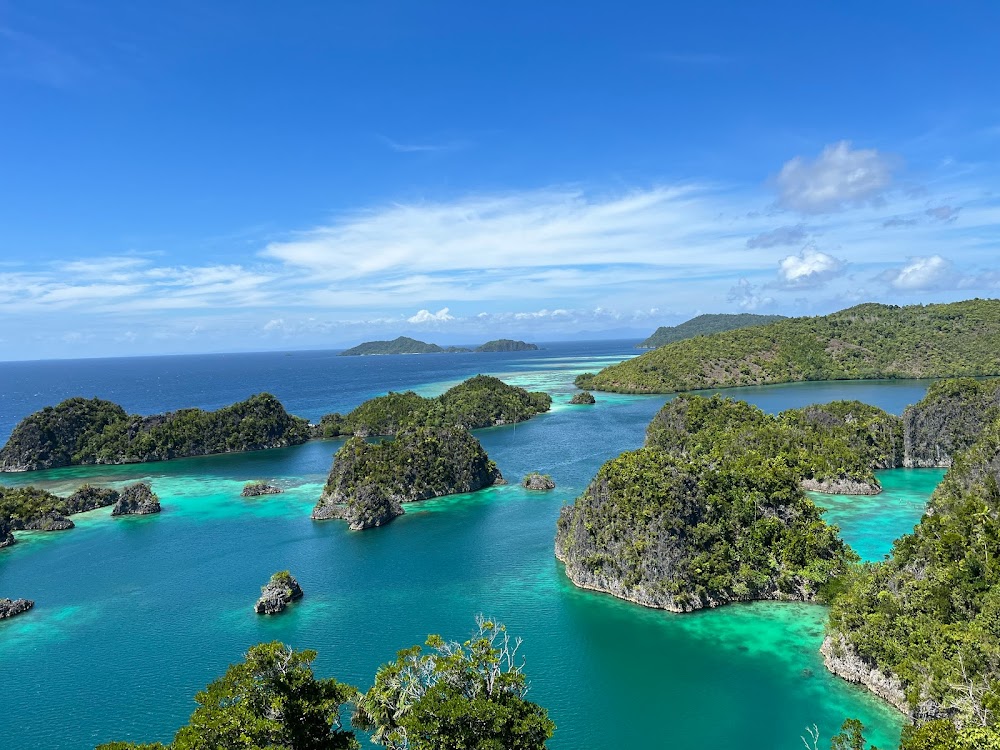Raja Ampat Marine Park (taman nasional Raja Ampat)
Overview
Raja Ampat Marine Park, nestled in Papua Barat, Indonesia, is an enchanting archipelago celebrated for its stunning underwater and terrestrial landscapes. Translating to "Four Kings" in Indonesian, the park encompasses over 1,500 small islands, cays, and shoals, along with the larger islands of Waigeo, Batanta, Salawati, and Misool. This marine paradise is often hailed as one of the most unique and biodiverse marine habitats on Earth, making it a must-visit destination for nature enthusiasts, divers, and adventurers alike.
The rich history of Raja Ampat Marine Park is deeply intertwined with its indigenous communities, who have coexisted harmoniously with the environment for centuries. Officially established in 2007, the park was part of Indonesia's broader initiative to protect its incredibly diverse marine ecosystems. This decision was driven by the recognition of the area's exceptional biodiversity and the urgent need for preservation. Collaborative management involving local communities, conservation organizations, and the government has been vital in ensuring that this natural heritage remains intact for future generations.
Significantly, Raja Ampat is a key component of the **Coral Triangle**, a marine area that encompasses the waters of Indonesia, Malaysia, the Philippines, Papua New Guinea, Timor-Leste, and the Solomon Islands. This region is renowned for its astonishing variety of coral species and marine life. Raja Ampat alone is home to around **75% of the world’s known coral species** and boasts over **1,300 species of reef fish**, along with various marine mammals and rare marine creatures. These remarkable statistics highlight the area’s global ecological importance and its critical role in marine biodiversity conservation.
One of the most captivating aspects of Raja Ampat is its unique geological formation. The islands predominantly feature **karst landscapes**, formed from ancient limestone that creates dramatic cliffs, hidden lagoons, and extensive cave systems. Above the water, the islands are lush with tropical flora and fauna, including several endemic bird species such as the **Wilson's Bird-of-paradise** and the **Red Bird-of-paradise**. Visitors to the archipelago often find the vibrant terrestrial ecosystems just as enchanting as the underwater wonders.
For diving and snorkeling enthusiasts, Raja Ampat is pure paradise. The warm, clear turquoise waters offer exceptional visibility, allowing adventurers to explore intricate coral gardens, underwater caves, and a bustling marine ecosystem. World-renowned diving sites like **Cape Kri**, **Manta Sandy**, and **Boo Windows** are famous for their rich marine life and excellent diving conditions. Encountering manta rays, sharks, sea turtles, and a dazzling array of colorful fish provides unforgettable underwater experiences.
On land, the beauty of Raja Ampat is equally breathtaking. Island-hopping tours enable visitors to discover stunning karst islands, pristine beaches, and indigenous villages. The **Piaynemo viewpoint** is particularly popular for its panoramic vistas of emerald waters dotted with limestone islets. Moreover, local villages offer cultural tours where visitors can learn about traditional Papuan life, craftsmanship, and the deep-rooted relationship between the community and the sea.
Raja Ampat's conservation efforts are commendable as well. Several **marine protected areas (MPAs)** have been established within the park to safeguard critical habitats and promote sustainable fishing practices. Many eco-resorts and homestays actively participate in conservation initiatives, such as coral reef restoration projects and educational programs for visitors and locals alike. These efforts are crucial for maintaining the health and vitality of Raja Ampat's ecosystems amid growing environmental pressures.
In conclusion, Raja Ampat Marine Park delivers an unparalleled blend of natural beauty, ecological significance, and cultural richness. Whether you're an avid diver, a nature lover, or simply seeking a tranquil escape, Raja Ampat promises an experience that is both educational and exhilarating. Its vibrant coral reefs, diverse marine and terrestrial wildlife, and commitment to sustainable conservation make it a shining gem in Indonesia's vast archipelago, inviting visitors to discover and cherish the wonders of the marine world.







